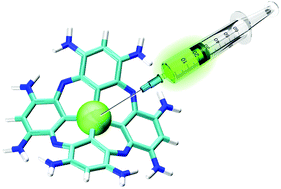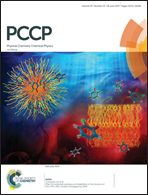On the structures, spin states, and optical properties of titanium, platinum, and iron azacalixphyrins: a DFT study†
Abstract
Azacalixphyrins (ACP) constitute a new class of macrocycles isoelectronic and isostructural to porphyrins. Herein, we report the first theoretical investigation of the properties of the ACP macrocycles metallated at their centre by titanium, platinum, and iron ions. We considered both the original phenyl-type ACP and new pyridyl-type forms. Our results indicate that the metallation greatly impacts the global structure of the macrocycle through pseudo Jahn–Teller effects, giving rise to a possible conformational transition between D2d and S4 structures. Such an effect could not be found in the metal-free ACPs. In addition, we find that, in contrast to the purely singlet platinum ACPs, and the purely triplet iron ACPs, several spin states are energetically close in the titanium ACPs, especially when weak field ligands are bound in axial positions to the metallic centre. According to TD-DFT calculations, metallation also tunes the optical properties. In particular, the absorption band in the near infrared region undergoes a hypsochromic shift of ca. 100–200 nm when going from the D2d to the S4 structures. We quantify how the addition of electroactive ligands in the axial position can increase or tune down these spectral changes. This contribution therefore supports the development of ACP coordination complexes.



 Please wait while we load your content...
Please wait while we load your content...